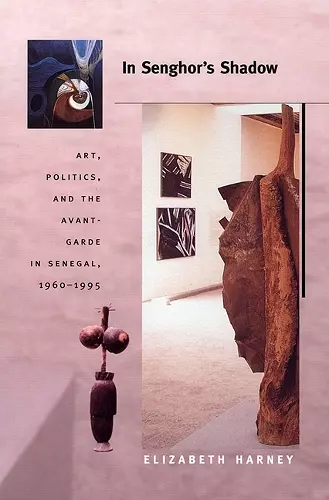In Senghor's Shadow
Art, Politics, and the Avant-Garde in Senegal, 1960–1995
Format:Paperback
Publisher:Duke University Press
Published:23rd Nov '04
Currently unavailable, and unfortunately no date known when it will be back

A study of art in post-independence Senegal.
An examination of visual art in post-independence Senegal. It explores the complex interplay of cultural nationalism, negotiations of postcolonial identity, and an emergent artistic modernism. Highlighting the distinctive cultural history that shaped Sengalese modernism, it reveals its innovations, diversity, and dynamism.In Senghor’s Shadow is a unique study of modern art in postindependence Senegal. Elizabeth Harney examines the art that flourished during the administration of Léopold Sédar Senghor, Senegal’s first president, and in the decades since he stepped down in 1980. As a major philosopher and poet of Negritude, Senghor envisioned an active and revolutionary role for modern artists, and he created a well-funded system for nurturing their work. In questioning the canon of art produced under his aegis—known as the Ecole de Dakar—Harney reconsiders Senghor’s Negritude philosophy, his desire to express Senegal’s postcolonial national identity through art, and the system of art schools and exhibits he developed. She expands scholarship on global modernisms by highlighting the distinctive cultural history that shaped Senegalese modernism and the complex and often contradictory choices made by its early artists.
Heavily illustrated with nearly one hundred images, including some in color, In Senghor’s Shadow surveys the work of a range of Senegalese artists, including painters, muralists, sculptors, and performance-based groups—from those who worked at the height of Senghor’s patronage system to those who graduated from art school in the early 1990s. Harney reveals how, in the 1970s, avant-gardists contested Negritude beliefs by breaking out of established artistic forms. During the 1980s and 1990s, artists such as Moustapha Dimé, Germaine Anta Gaye, and Kan-Si engaged with avant-garde methods and local artistic forms to challenge both Senghor’s legacy and the broader art world’s understandings of cultural syncretism. Ultimately, Harney’s work illuminates the production and reception of modern Senegalese art within the global arena.
“Over the last three decades the study of modern and contemporary African art has moved inexorably into the mainstream of art history where it rightfully belongs. Elizabeth Harney’s scintillating study of modernism, modernity, the avant-garde, and the African imagination not only contributes to but enlarges the discursive and historiographic borders of the ‘new art history.’ Her detailed and beautifully written work provides a guiding insight into the centrality of Negritude in any history of modernism. This book is an invaluable resource for all those interested in African art history and its contributions to the history of the modernist avant-garde.”—Okwui Enwezor, Artistic Director of Documenta 11 and publisher and founder of Nka: Journal of Contemporary African Art
“There is no book on any contemporary African art that even comes close to the richness and sophistication of this text.”—Christopher Steiner, author of African Art in Transit
ISBN: 9780822333951
Dimensions: unknown
Weight: 522g
344 pages